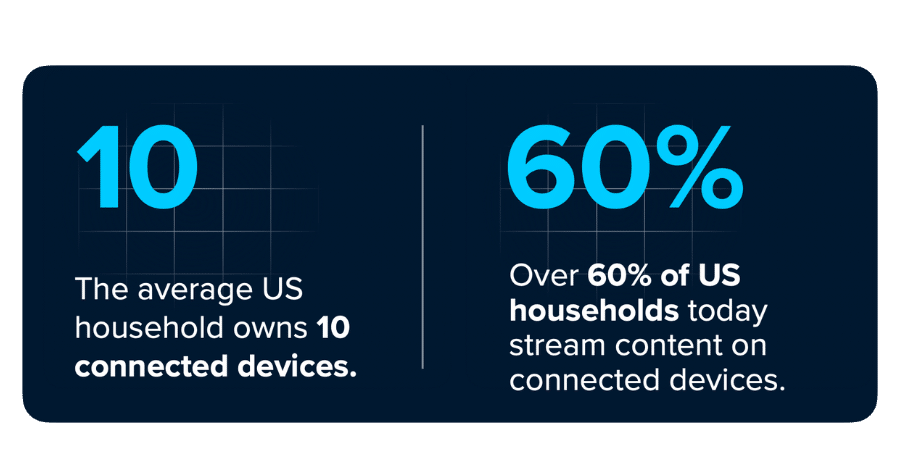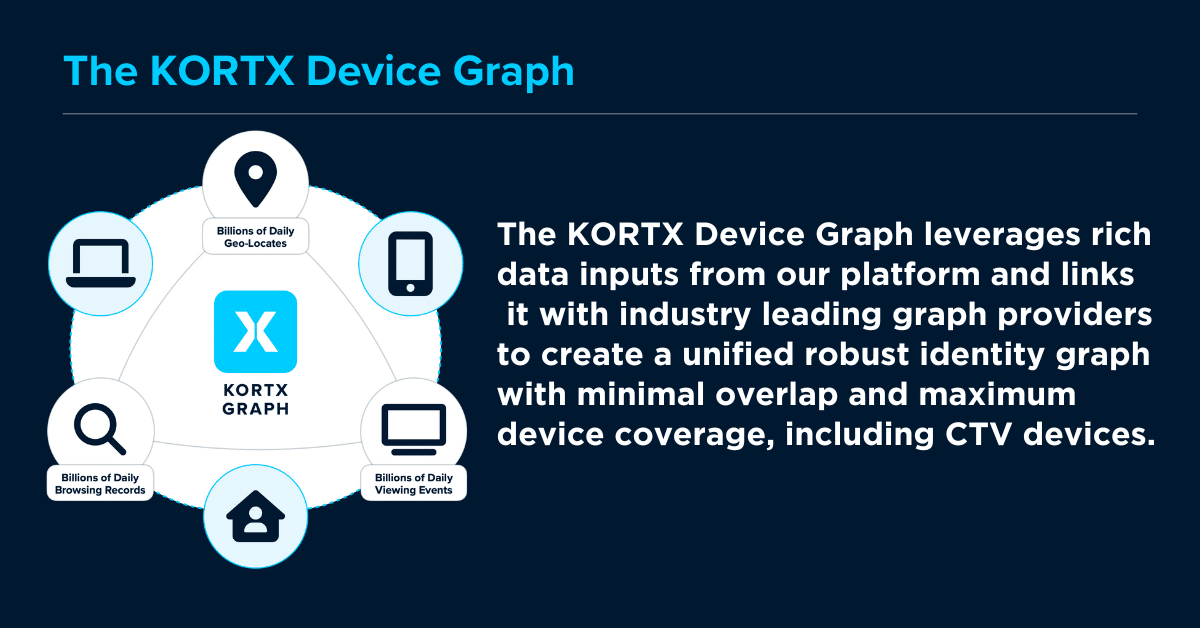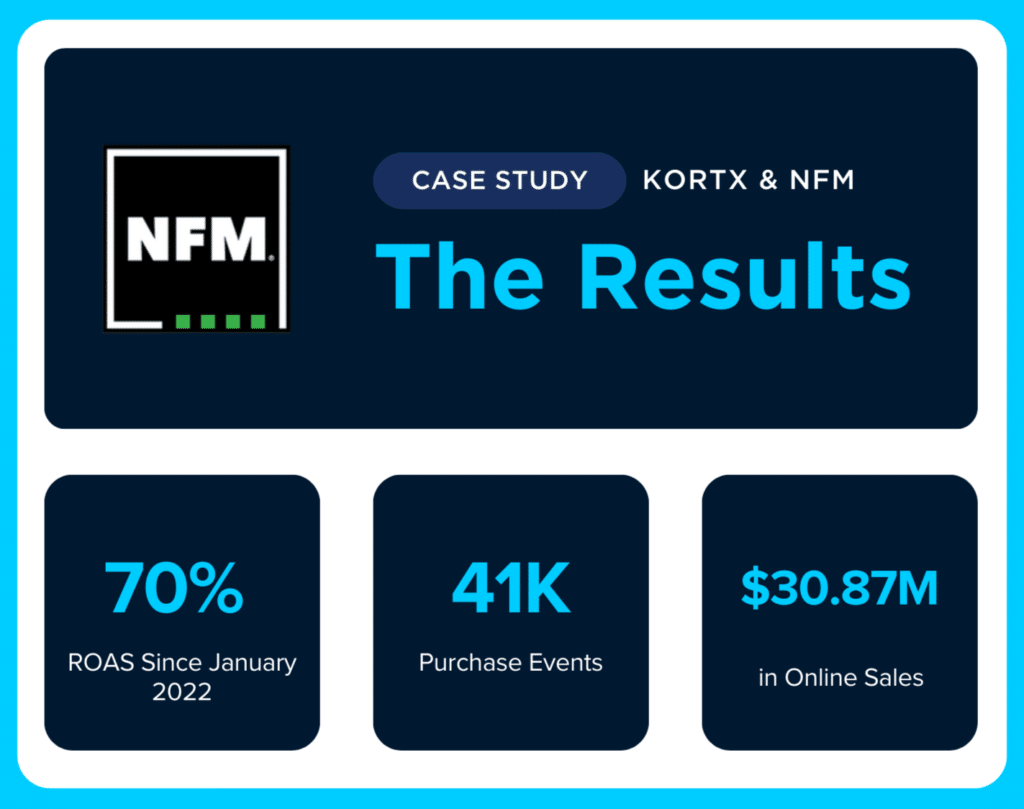Experiences refined for people
Experiences refined for people
The average US home owns 10 devices and you can reach them all with cross-device targeting.
Explore its benefits in expanding reach, seamless brand exposure, and precise measurement for optimized marketing strategies. Embrace Device Graph Targeting’s improved accuracy and enhanced insights to future-proof your campaigns in the evolving digital landscape.

What is a Device Graph?
A Device Graph is a data structure used in digital marketing that anonymously connects and attributes individual devices to a single user. This data is created and collected by combining multiple inputs to offer a bird’s eye view of the device set-up in a home.
For example, one home may have multiple smart TVs, mobile devices (phones and tablets) owned by individuals, and a desktop computer. A Device Graph uses data such as browser activity and GPS pings to determine which device belongs to an individual.

What is Cross-Device Targeting?
Cross-device targeting refers to the marketing practice of delivering consistent ads and messaging across a user’s devices. Powered by a Device Graph, this type of marketing allows campaigns to reach a user across their mobile phone, connected TV, and other relevant devices.
There are two methods for cross-device targeting: deterministic or probabilistic (or IP) tracking. Both of these targeting methods utilize personally identifiable information to build a map or Device Graph comprised of all the devices in a home used by individuals. These tactics can also be combined.
Deterministic tracking is the most accurate version of cross-device targeting as it relies on individual ID and device information. This targeting method combines login information used across websites (like email addresses) with device data to get an accurate view of an individual and their devices. The big tech players collect this information, which can sometimes be more expensive than other forms of targeting. However, accuracy can offset these costs as it leads to successful campaigns.
Rather than relying on a Device Graph or fixed events, probabilistic device targeting takes an algorithmic approach to connect users to their devices. This targeting combines data points like IP addresses, operation systems, and WI-Fi information to make an educated guess regarding device ownership.
📲 How can marketers leverage the insights gained from Cross-Device Targeting to create more personalized content for their campaigns? 📲
“By understanding user engagement patterns, such as preferred content formats and peak activity times for each device, marketers can optimize their campaigns for increased relevance and effectiveness. Sequential messaging, dynamic content adaptation, and refined retargeting strategies, informed by cross-device data, ensure content resonates deeply and drives desired actions.”
Corey Rice, Director of Strategy, KORTX
This data-driven approach connects with users on multiple devices, ensuring seamless brand exposure and precise measurement to optimize your marketing strategies effectively.
Cross-device targeting enables marketers to extend the reach of their target audiences by leveraging data to connect with users on multiple regularly used devices. This approach ensures that your brand message and marketing efforts are not confined to a single device. Instead, Cross-Device Targeting allows marketers to reach users wherever they are, increasing the likelihood of engagement and conversions.
With this comprehensive view of user behavior across multiple devices, you can create more personalized and effective campaigns, boosting your brand’s visibility and attracting a wider audience.
Cross-device targeting makes managing brand exposure across devices seamless. By using data and analytics, marketers can ensure that users receive consistent and cohesive brand messaging regardless of their device. This consistency in messaging contributes to a stronger brand identity and reinforces your brand message.
🔄 What are your top tips for effectively integrating Cross-Device Targeting into a larger omnichannel marketing strategy? 🔄
“To effectively implement cross-device targeting, it’s ideal to maintain a cohesive brand message across all platforms, prioritize mobile optimization, and leverage the appropriate analytics for insights. Personalized content that transitions smoothly across devices is key, and it’s essential to continuously test new strategies and apply the learnings to future campaigns.”
Corey Rice, Director of Strategy, KORTX
Accurately measuring reach, frequency, and conversions is a significant advantage of cross-device targeting. Marketers gain valuable insights into campaign performance and user engagement by tracking users across devices and understanding their interactions. This data-driven approach allows for precise analysis of how users engage with your brand across different platforms, enabling you to optimize your marketing strategies, adjust frequency capping, and allocate budgets more effectively.
Visualizing the incremental lift from cross-device conversions provides a deeper understanding of your marketing impact. By attributing conversions to the user’s entire digital journey across devices, you can measure the true effectiveness of your marketing efforts. This analysis helps you identify which channels and devices contribute most to conversions, allowing you to fine-tune your campaigns and focus on the most influential touch points.
🔕 How should marketers manage ad frequency in Cross-Device Targeting to prevent overwhelming users? 🔕
“It’s all about balance. If incorporating a media mix into your campaign, be sure to introduce recency to frequency so they become best friends. We want to think of the user’s experience and ensure that they are receiving an appropriate amount of ads per 24 hours and a healthy stretch of time in between those ads so they don’t become oversaturated with the same messaging. When taking into account the user experience and the brand integrity of the client, we can, then, expect an accurate volume of engagement.”
Paolo Miano, Ad Operations, KORTX
The KORTX Device Graph merges exclusive data from our First-Party platform with top-tier providers. Seamlessly target your audience across all devices, including CTV devices.
By using diverse data points like device IDs and behavioral patterns, Device Graph Targeting ensures precise user mapping and messaging consistency across multiple devices. Other benefits include:
Cross-Device Graphs leverage advanced algorithms and machine-learning techniques to map user devices accurately. This approach considers multiple data points such as device IDs, login information, app usage patterns, and behavioral signals. As a result, it provides a more precise understanding of user behavior across various devices and platforms.
With a Cross-Device Graph, marketers can connect user identities across different devices, including smartphones, tablets, desktops, and connected TVs. This allows for more effective cross-channel targeting and messaging consistency. Marketers can deliver cohesive and personalized experiences to users across their entire digital journey, regardless of the devices they use.
Cross-Device Graphs provide a holistic view of user behavior and engagement. By understanding how users interact with content and ads across multiple devices, marketers gain valuable insights into cross-device user journeys, attribution, and conversion paths. This knowledge helps optimize marketing strategies, allocate budgets effectively, and deliver personalized experiences.
IP matching relies on identifying users based on their IP addresses. However, IP addresses can be dynamic, shared among multiple users (in the case of public Wi-Fi networks), or masked by VPNs or proxies. These factors limit the accuracy and reliability of IP matching. Cross-Device Graphs offer a more robust alternative that isn’t solely dependent on IP addresses, allowing for better accuracy and coverage.
As the number of connected devices continues to grow, relying solely on IP matching becomes increasingly limited. Cross-Device Graphs adapt to the evolving landscape of devices, platforms, and user behaviors. They provide a scalable and flexible solution for marketers to reach users across their expanding array of devices, ensuring relevant and consistent messaging.
With the looming elimination of Third-Party cookies, the significance of probabilistic data diminishes, shifting reliance toward deterministic data.
This change will likely result in marketers facing reduced campaign reach in digital advertising. Current data analysis suggests a potential loss of up to 75% of the data for such campaigns.
As probabilistic data becomes less reliable, businesses need to adjust their strategies. To ensure accurate targeting and personalization, marketers should focus on using Cross-Device Graphs while they are still viable and offer scale, but continue to ensure their First-Party (deterministic) data strategies are equipped for change.

NFM achieved remarkable success by leveraging Cross-Device Targeting and a strategic blend of CTV and OLV placements, driving engagement and revenue growth.
🎯 Goal: NFM partnered with KORTX to boost brand awareness and drive online purchases, building upon their successful Connected TV (CTV) strategy.
💡 Strategy: KORTX recommended incorporating Online Video (OLV) placements alongside CTV to expand brand reach. Using KORTX’s Device Graph, NFM partnered with KORTX to deliver personalized ads to the target audience across devices.
📈 Success: The campaign resulted in 68,402 cross-device site activities, with 54% of conversions occurring on desktop after mobile ad impressions. Attributed Purchase Revenue from KORTX campaigns increased by 18.6%.
📊 Results: 70% Return on Ad Spend (ROAS) since January 2022, 40,838 Purchase Events, and $30.876 million in Online Sales.
With its ability to connect with users on multiple devices, provide cohesive brand exposure, and offer valuable insights, Cross-Device Targeting is a game-changer for marketers seeking to reach their audience effectively in a device-rich world. Stay ahead of the curve and leverage this data-driven approach to maximize your marketing efforts and deliver personalized experiences that resonate with your customers across their entire digital journey.
About the Author
Chris Rowell is the Co-Founder and CRO at KORTX.

Interested in learning how KORTX’s Device Graph and reach can help your brand or client?
From us to your inbox weekly.